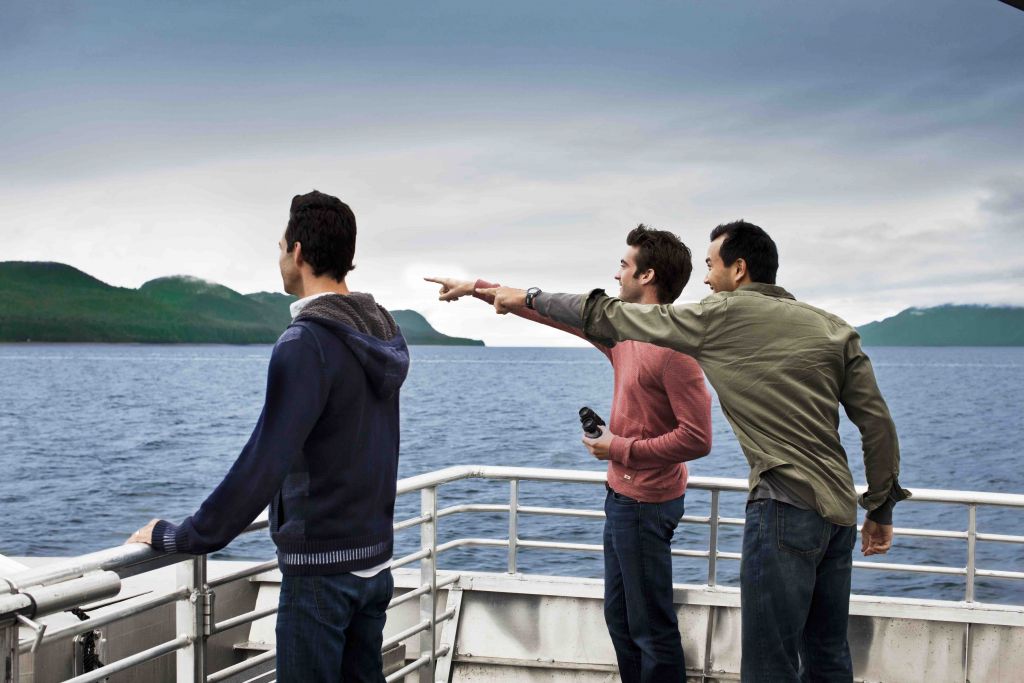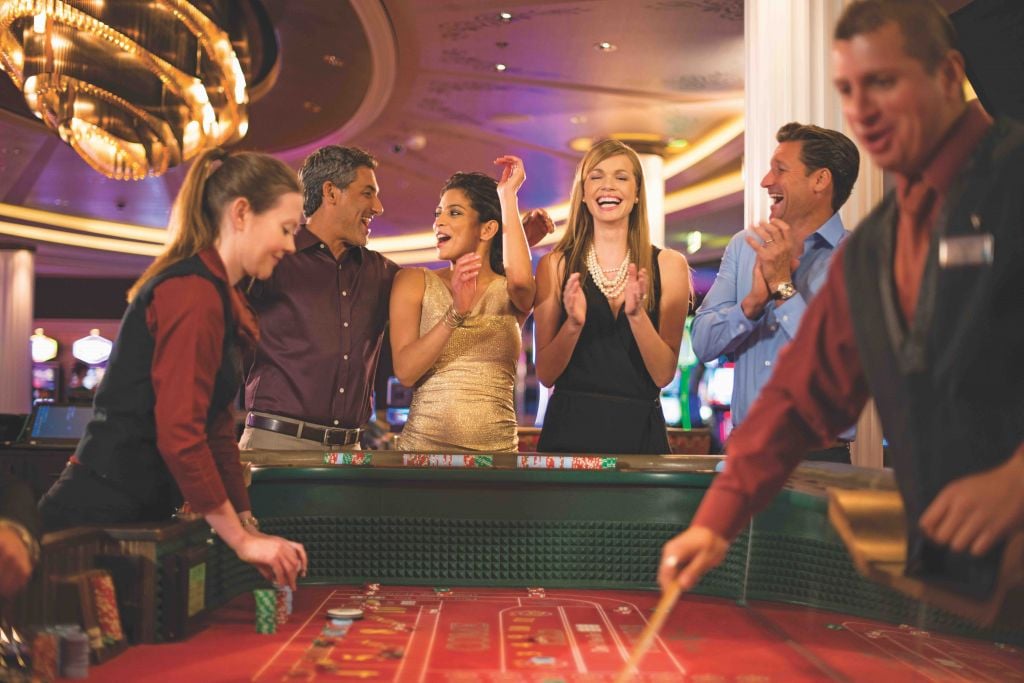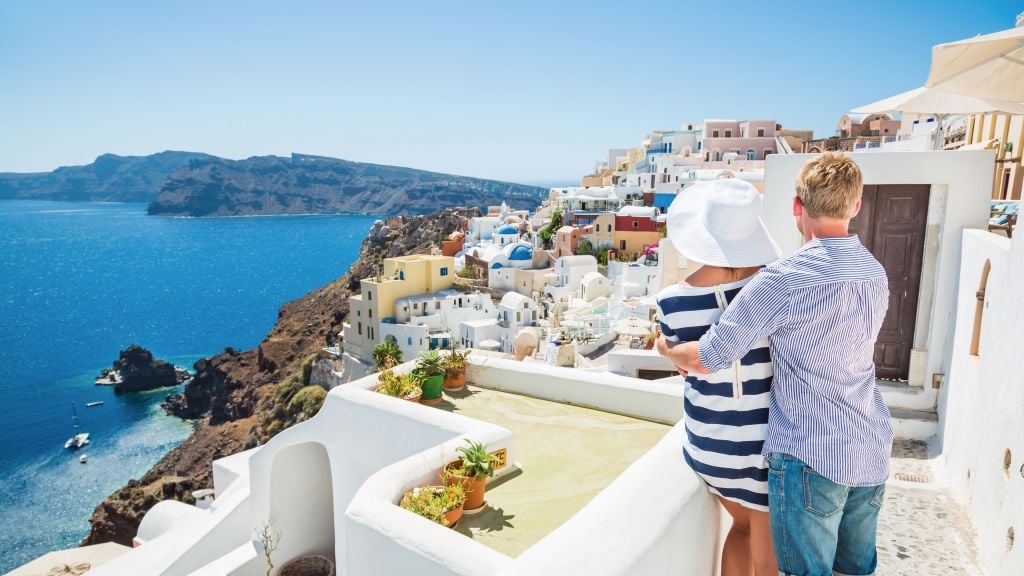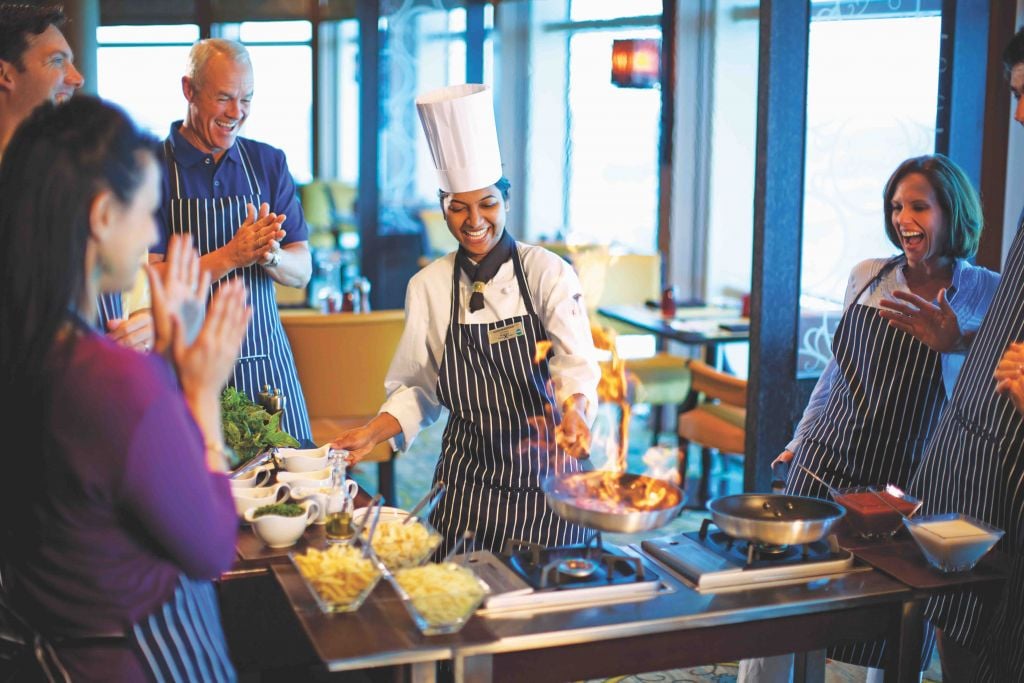Corporate Incentives, Meetings & Charters
Corporate Incentives, Meetings & Charters
“Economics is, at root, the study of incentives.”
– Steven Levitt, Freakonomics
Incentives control every aspect our lives, starting when we first learn to eat our peas if we want a cookie.
Today successful organizations utilize incentives to reward and motivate employees, customers, and other stakeholders to adopt certain behaviors and avoid others. Incentive programs increase innovation and revenue, decrease losses and expenses, and reinforce corporate culture.
One analysis of incentive travel trends found a 22 percent gain in performance after implementing a new program, jumping to 44–48 percent for programs in place longer than six months. Another study found that firms with effective incentive programs enjoyed 31 percent lower voluntary turnover.
To gain an edge in their markets, businesses invest in rewards including cash, gift cards, trophies, recognition, time off, professional development, trendy merchandise, and the most coveted award of all, leisure travel.

US organizations spend more than $100 billion per year on incentive rewards. Across all programs, the prevalent rewards are gift cards (71% of organizations), merchandise (38%), award points (36%), and travel (30%). Eighty percent of programs employ more than one type.
For sales programs, the top objectives are to increase overall revenue (80% of programs), boost morale (76%), and improve productivity (58%).
Cash and gift cards are used to minimize administration when many participants will be earning rewards. Trendy merchandise and leisure travel are used when buzz is more important.
Individual travel is the ultimate reward. It offers enormous impact—no one ever forgets it—although travel can be difficult to administer. To eliminate most of the admin for planners, Celebrity Cruises offers individual cruise gift cards and certificates.
Compared to cash and cards, the most powerful advantage of tangible noncash rewards is the recognition value.
Tangible awards are highly visible. Everyone knows who earned them and how. They generate anticipation before, social media during, and an afterglow well beyond the awarding. Winners will gush enthusiastically to any willing listener about a luxurious resort or cruise experience they enjoyed—and the organization that made it happen.
Bragging about a cash reward, on the other hand, is just awkward.
Tangible rewards like those given by incentive travel programs occupy more mental space, compared to cash and cards, making them feel more desirable despite equivalent value.
The added value of these awards translates into measurable increases in effort, perseverance, and performance by recipients. More emotional attachment means more behavioral change.
In one field experiment that followed consecutive sales contests, with one cohort receiving cash and the other receiving prizes, performance in the initial round was comparable. But in subsequent rounds, the median sales results were significantly better from prizes rather than cash.
In laboratory experiments, participants receiving tangible rewards provided work of greater quality, committing fewer mistakes, compared to the cash recipients.
While cash and cards tend to be viewed as transactional, tangible rewards feel more like gifts, more social in nature. They lead to more emotional relationships.
Coveted noncash rewards such as cruise vacations also trigger appreciation and a desire to reciprocate the gift. When employees associate an emotionally impactful reward with the organization that gives it, they seek ways to respond through greater productivity and creativity.
Such a reciprocity effect persists well beyond the transaction, because recipients recall the gift more frequently and more fondly than they would a cash reward, resulting in feelings of greater valuation by their organizations and more positive workplace behaviors such as attendance and engagement.
People often expend more effort for no pay (a social market) than they do for a little pay (a monetary market). Mere acknowledgement of a person’s good work creates a human connection, a bit of magic that can spark a transformation.
Employees who already earn sufficient salaries are motivated more by managerial praise and one-on-one time with leaders than by cash rewards, stock options, even pay raises. Those who are happiest at work say their managers excel at giving feedback and recognition.
Conversely, nearly 80 percent of employees who quit their jobs cite lack of appreciation.
One large study of customer service employees concluded that fair, consistent, timely recognition by managers and peers improved employee behavior and customer experience significantly. A similar study of managers found that employee recognition was the most effective form of reward, improving retention, communications, sales, customer satisfaction, and teamwork.
Members of Fortune magazine’s list of 100 Best Companies to Work For average 50 percent lower turnover and enjoy 15–25 percent greater return to investors than do other companies in their industries.
Rewards and recognition impact a company’s ability to acquire talent and achieve customer objectives like satisfaction, loyalty, and profitability. With unemployment near record lows, the best organizations understand that competitive rewards and recognition help attract better employees.
Dollar for dollar, tangible noncash rewards derive added value from their personal meaning. The best travel incentive programs are designed to ensure that recognition be personalized. The more that recipients enjoy and recall incentives like luxurious vacations, the more they talk up their organizations.
Some of the best company retreat ideas are group incentives, which promote social connections, enabling coworkers to spend quality time with colleagues they care about and generating more positive feelings for the organization.
Whether in groups or individually, cruises and other leisure travel stimulate parts of the mind that cash does not.

Top-performing companies are better at leveraging their rewards programs, compared to average-performing companies. The top performers can be defined as those with sales of $100 million or more, revenue or stock growth of at least 5 percent, excellent customer ratings, and 90 percent employee satisfaction.
Incentive program design has shifted over time from rewarding only the truly exceptional employees (exclusivity) toward ensuring that many high-performing employees feel the love (reach). When designing their incentives, top organizations focus on reach, rather than exclusivity.
To help planners tailor awards, Celebrity’s travel certificates can be tiered, rewarding different groups of high-performing employees appropriately.
Incentive programs—especially travel programs—must respond to the personalities and desires of their potential recipients. In that way, they also instill an organization’s culture, succeeding to the degree that they reflect the values of that culture. Incentive programs—especially travel programs—must respond to the personalities and desires of their potential recipients. In that way, they also instill an organization’s culture, succeeding to the degree that they reflect the values of that culture.
Incentive travelers can be viewed in five general categories:
A successful travel incentive program must offer something of value for each personality type. With hundreds of destinations and thousands of engaging shore excursions around the world, Celebrity vacations have everyone covered.
These travelers desire in-depth experiences. They have intellectual personalities, appreciate new technologies, enjoy fine dining and wine, and influence their friends. They may use their travel certificates to sail the Arabian coast, explore Angkor Wat, or dive the Great Barrier Reef.
Your best influencers are confident, younger, more affluent, and enamored of technology. They book the suite, enjoy the spa, and use the gym. Trendsetters choose the shore excursions that promise new travel experiences. They may use their travel certificates to discover the massive glaciers of Alaska, explore the iconic cities of Europe, or round the faraway tip of South America.
These award winners feel young at heart. They don’t travel for romance or extravagance, but for flexibility and freedom. They may use their travel certificates to stroll the pretty pink beaches of Bermuda or cruise the rocky coast of New England.
They’re married and enjoy time at home. Vacations are well-earned breaks from responsibility, not wild adventures. They may use their travel certificates to relax on the beaches of the Caribbean, tropical drink in hand, occasionally splurging on restaurants.
These hard-working, positive, practical people shop for value, minimize planning, and maximize quality time with loved ones. They may use their travel certificates to treat the whole family.

Determine what your awardees really want and remember that greater freedom of choice generates higher return on investment.
The most desirable rewards tend to be unforgettable experiences—from luxurious escapes to Bermuda to cultural journeys through Europe to leisurely explorations in the Land Down Under. Even greater value comes from travel associated with big events like Mardi Gras, the British Open, holidays, and celebrations. The most meaningful travel includes friends and family.
Celebrity builds overnight stays into longer itineraries, so guests can experience the nightlife. Camp at Sea entertains younger vacationers, Family Tour Challenges engage everyone, and the culinary program extends from ship to shore excursion via Chef’s Market Discoveries.
Many of your prospective awardees would gladly work harder, smarter, and more effectively all year in exchange for a week or two of lounging on sandy white beaches, basking in warm winter breezes, and gazing at epic sunsets in The Bahamas, Caribbean, or Hawaii. In Australia, New Zealand, and the South Pacific, when it’s winter here, it’s summer there.
They’ll tan their faces in the golden sunshine, cool their bodies in the blue waters, and return to work relaxed, recharged, and ready for anything—while telling everyone about the wonderful experience they had and the generous organization that treated them.
Nothing adjusts an attitude quite like a few days and nights in British Bermuda—pink sand beaches under foot, rum swizzle in hand, world-class golf all around, and brilliant blue waters as far as the eye can see. Bermuda cruises depart from Northeastern cities and include multiple days and nights in port.
Celebrity’s Bermuda cruises also include visits to the charming Southern city of Charleston, the picturesque coast of New England, or the maritime islands of Canada. New itineraries include the dramatic fjords of Greenland and Iceland.
The Old World can always show your award winners something new, even if they’ve been to Europe a dozen times. Culture seekers definitely find much to discover in the Mediterranean, Northern Europe, and the British Isles.
All along the sparkling Mediterranean, they fall in love with iconic cities like Barcelona, Rome, Naples, and Athens. Vacationers can climb the famous Rock of Gibraltar, taste French wines and cheeses at the source, even race gondolas through the romantic canals of Venice.
Northern Europe itineraries explore natural wonders like the Norwegian fjords, as well as artistic gems like the Hermitage in St. Petersburg. Sailings around the British Isles delight travelers from the theater district of London to the ancient castle in Edinburgh to the Irish pubs of Dublin.
Celebrity deploys six of our luxurious ships in Europe, including two of our newest.
Nature lovers flock to Alaska, amazed to watch the eagles soaring, whales breaching, and glaciers thundering into the sea. Many upgrade their adventures to land-and-sea Cruisetours, trekking up to Denali or into the Canadian Rockies.
The Last Frontier makes a natural choice for families. They can mush the huskies, pan for gold, meet indigenous peoples, and post eye-popping selfies, telling breathless stories for years. The Celebrity Revolution, a $500 modernization of our entire fleet, began this year in Alaska.
At the other end of the planet, adventurers can feel the roar of Iguaçú Falls, world’s largest waterfall system, wedged between Brazil and Argentina. They can join the beautiful people on the famous beaches of Rio, tango down the vibrant avenues of Buenos Aires, even explore the very ends of the Earth, Antarctica.
Nothing generates buzz for your program quite like an incentive trip to the inscrutable East or the Land Down Under. Incentive winners who choose exotic Asia, Australia, or New Zealand travel discover vibrant cities from Tokyo to Melbourne, natural beauty from the deserts of Arabia to the Great Barrier Reef, rousing foods to thrill the senses, and enduring customs to open their hearts.
Celebrity ships explore Asia and Oceania from Hong Kong, Singapore, Sydney, and other convenient departure cities.
Your most intrepid travelers covet the most exotic destinations, like the Galapagos Islands, an isolated archipelago in the Pacific whose wonders inspired Charles Darwin, and Machu Picchu, the stunning 15th-century Inca citadel high in the Andes Mountains.
A site of endless scientific study, the Galapagos exist in a world apart—so far apart that their extraordinary creatures are found nowhere else. They haven’t learned to fear humans, so the few people who ever get to visit them are rewarded with incredible access—a trophy experience worthy of your top awardees.
Celebrity just expanded our fleet here by launching a luxurious, all-inclusive, mega yacht designed specifically to explore these islands, with shore excursions led by expert naturalists.
Optional vacation packages make it easy to add Machu Picchu, on the South American mainland.
Make rewards meaningful to each winner. For some, fungible rewards like cash and gift cards are appropriate, but at the cost of long-term memorability.
A winner’s mental accounting lumps cash into the same category as wages, so it’s not appreciated as much as trendy merchandise or luxurious travel. Cash may also ignite inflationary expectations. Programs for front-line workers often include cash or cards for everyday purchases.
For top performers in top-performing organizations, however, awards such as luxurious cruise vacations are more motivating. Incentive travel can refocus a salesperson’s attentions quickly and effectively.
Whether cash, merchandise, or travel, remember to allow choice and provide unique adventures.
Rewards of all types should be geared to spark the positive emotions that come with feeling included, valued, and appreciated. Research finds that tangible noncash rewards deliver greater returns than the equivalent cash. These findings are somewhat counter-intuitive, since cash and equivalents are the most fungible rewards—they can be spent on anything.
The more people earn, however, the greater their preference for tangible noncash rewards, especially travel, experiences, and merchandise they would not normally buy for themselves. People often prefer noncash rewards because they know they’ll just spend cash on something pedestrian.
Another data point arguing in favor of well-chosen noncash rewards is the extent of their use. In 2016, 84 percent of US organizations used tangible rewards, a three-fold increase from 20 years earlier.

Imagine the fresh salmon while sailing Alaska, the jerk chicken while cruising the Caribbean, the pizza in Naples, the wine in France. Fine dining and drinking may be the highest and best use of incentive travel.
When travel programs are limited to hotels and resorts, however, great cuisine can be difficult to incorporate. Conveniently, cruise lines include meals, and the food ranges from good to excellent. While stereotypes about buffet lines persist, many ships feature multiple restaurants. Luxury lines make their cuisine a key selling point.
Celebrity ships, for example, offer up to 18 cafés and restaurants. Venues include Tuscan Grille steakhouse, Murano for French fare, and Sushi on Five. Bars and lounges range from the ice-topped Martini Bar to Rooftop Terrace, where guests enjoy movies under the stars with cocktails and snacks.
Your award winners deserve well-appointed staterooms and suites, with plenty of room to spread out and private verandas for breakfast at sunrise, drinks at sunset, and panoramic views any time.
On Celebrity’s new Edge® Series ships, guests can turn their entire stateroom into a veranda or, conversely, bring the entire room out to the water’s edge.
In Concierge Class, staff takes care of all the little details that can make a world of difference, and in AquaClass®, guests enjoy proximity to the spa and access to their own restaurant. Award winners live large in suites with personal butlers, a private restaurant, and an exclusive lounge.
Your award winners crave exciting entertainment and engaging activities. The best travel incentive programs include stage productions with inspiring stories and amazing talent—maybe a bit of street theater—although incorporating such experiences can be challenging for planners.
Nothing relaxes, rejuvenates, and rewards your top performers quite like an indulgent spa day—massage, facial, maybe an aesthetic touchup. For many of your top producers, just finding time for the gym, a fitness class, some personal training—these are luxuries that often wait for vacations.
How about some casino action—blackjack, roulette, poker, slots? The odds are good that you have some gamers among your top performers.
Luxury ships bring entertainment, spa time, gym time, casino action, and more under one roof and make them easy to incorporate into your rewards program.
When your incentive travelers are not exploring new destinations, they can be learning new skills, like video editing, hot glass blowing, or wine blending.
Guests with a passion for food and wine can savor activities like wine appreciation 101 and wine pairing workshops.
Intellectual types can indulge their curiosity, develop the gray matter, and have some fun discovering new science, technology, engineering, and math activities.
Guests into fun and games can learn to spin tracks, practice dance moves, hone archery skills, or challenge fellow nerds with their command of trivia.
Since vacations are all about renewal, they can (re)start fitness programs—high-intensity interval training to burn fat, boxing for a hit of adrenaline, yoga for healing and rejuvenation.
Cruise ships make it easy to provide enrichment activities for your incentive travelers. Most are included.
Highly performing companies in the United States believe in noncash rewards such as incentive travel for their recruitment, retention, and engagement value.
They plan budgets from the bottom up, using a percentage of sales or employee income, rather than from the top down, based on prior spending. From studies of sales reward programs, top-performing companies invest 9.4% of projected income, while average businesses spend just 7.2%.
Almost 80% of the top-performing businesses set no ceiling on their sales incentive programs, while average companies tend to cap their programs.
Top-performing companies invest in higher payouts: $3,916 per salesperson, compared with $2,749 in average companies. Top-performing individuals in these companies earn over $5,000 in awards. They prioritize reach, rewarding more high performers, rather than exclusivity, rewarding only elite performers.
For maximum buzz, they integrate incentive communications into their broader organizational communications.

One study shows the three performance metrics used most often to evaluate sales incentives are revenue (66%), net new customers (49%), and product sales in units (37%). Other key metrics include productivity (25%), budget (24%), return on investment (20%), tenure (20%), and satisfaction (14%).
In performance-based programs, such as those for sales, partner channels, safety, and productivity, the rewards are designed to impact key performance indicators that have natural metrics and baselines.
However, programs designed to improve morale, reinforce culture, or build teamwork often have no KPIs, making them hard to evaluate objectively. Managers of these programs review engagement surveys, conduct focus groups, and track participation.
While revenue and expenses are easy to measure, the intangible benefits of tangible incentives—often the most valuable part—are the hardest to translate into firm numbers. Typical metrics include decreased turnover, increased productivity, market share, and customer satisfaction.
Across all types of recognition programs, one big indicator of success is the enthusiasm of participants. Just to get people engaged with an organizational objective is an achievement.
With or without KPIs, executives from top-performing companies support their incentive programs, which become part of corporate culture.
Incentive planners understand that personal rewards, especially vacation travel, are the most effective both for winners and for programs. But planning can be labor intensive and costly.
Meanwhile, cash is easy. It requires little thought, gets transferred electronically, and scales easily. Cash has a clear, fixed value, and recipients can spend it on whatever they want, even something mundane and devoid of incentive value. Like rent.
Cruise travel certificates, however, are just as easy to manage as cash while incentivizing winners more effectively. Certificates can reward and motivate any number of recipients with minimal planning and administration.
With Celebrity certificates, you establish the award tiers, and your awardees choose their own ships, schedules, and itineraries. Tiers can be designated by ship, by destination (Caribbean, Mediterranean, etc.), by class of accommodation (veranda, suite, etc.), or by other criteria you choose.
With three hundred destinations around the world, plus thousands of shore excursions and itineraries, everyone will be thrilled—including planners.
Incentive programs use individual travel certificates to reward salespersons, channel partners, employees in operations, important suppliers, and other VIPs for:
Individual travel certificates provide organizations with flexibility, cost effectiveness, and ease of implementation, while Celebrity cruises provide them with some of the most incentivizing incentives ever devised.
Top organizations allocate an estimated 49% of their total rewards budgets for design and operation of their programs. This expense can be reduced significantly depending on which rewards are utilized.
Cash and cash equivalents are the fastest and easiest programs to administer.
On the other end of the spectrum are group events, which make the most effective incentives as well as fun work retreat ideas. However, when utilizing hotels and resorts, the planning requires not only air transportation and rooms but also meals, entertainment, venues, AV, and ground transportation.
Cruise ships eliminate much of that work, since meals, entertainment, and venues are included with the guest rooms, and no local ground transportation is required. When partnering with Celebrity Cruises, even the air transportation can be handled easily, using Flights by Celebrity.
Organizations calculating total return on investment should consider every benefit that can be converted into money.
Employee and customer retention can be converted to hard dollars easily. Employees arriving late, leaving early, or missing work can all be quantified. Look at absenteeism, attrition, and the cost of losing or gaining a customer, and attach a dollar value to each. For wellness programs, calculate increased enrollment and utilization of benefits that translate into lower health.
Perform tangible and intangible return-on-investment calculations before and after incentive campaigns.
Overall, expect a return on investment of 2:1 to 5:1, with typical returns of $2 to $3 for each dollar invested in the incentive program, adjusted up or down for general declines or improvements in your market.